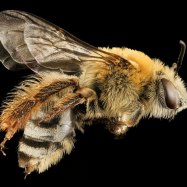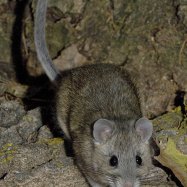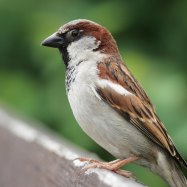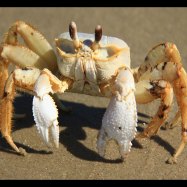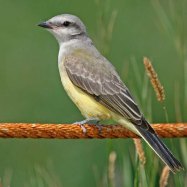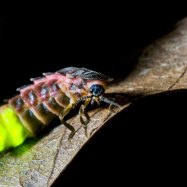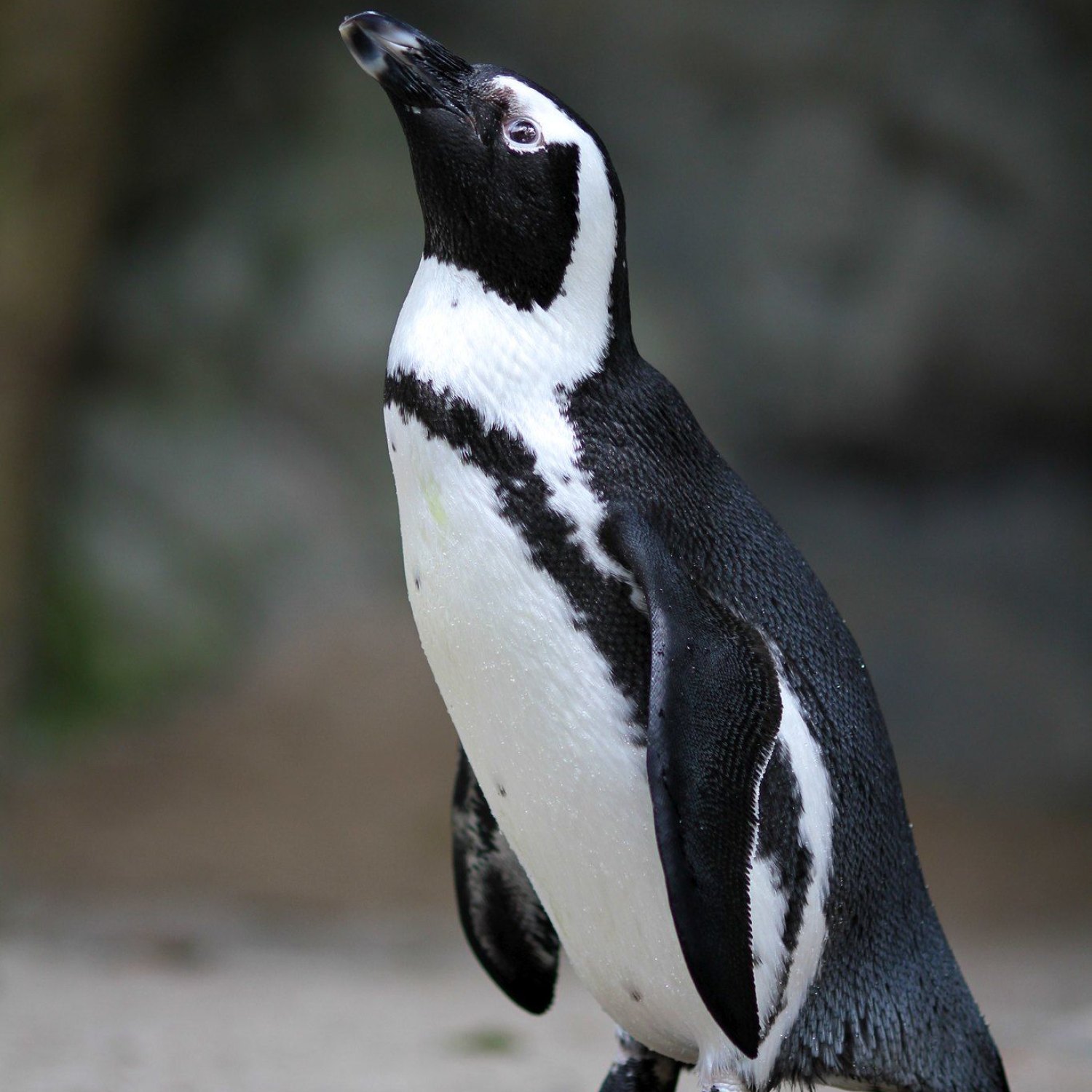
Magellanic Penguin
61-76 cm
Magellanic Penguins are medium-sized, stocky birds found in the Falkland Islands and Patagonia. They belong to the Spheniscidae family and can grow up to 61-76 cm in length. These charming creatures are popular among tourists who visit their natural habitat, so make sure to put them on your travel bucket list! #Animals #Penguin #FalklandIslands #Patagonia #Spheniscidae
Animal Details Summary:
Common Name: Magellanic Penguin
Kingdom: Animalia
Habitat: Marine, Coastal
Majestic Magellanic Penguins: A Fascinating Species of the South American Coast
They may be dressed in a classic black and white tuxedo, but there's nothing formal about the Magellanic penguins. These charming creatures, whose scientific name is Spheniscus magellanicus, are a popular sight along the coasts of South America, particularly in Argentina and Chile. Their playful nature, unique appearance, and impressive abilities have captivated the hearts of many, making them a beloved and iconic species of the region.From Kingdom to Order: Tracing the Magellanic Penguin's Classification
Like all living beings, the Magellanic penguin has a specific classification within the animal kingdom Magellanic Penguin. They belong to the kingdom Animalia, phylum Chordata, and class Aves, which means they are vertebrate animals with a backbone and are flying birds. However, what sets them apart from other birds is their order: Sphenisciformes, which is derived from the Greek word 'sphen' meaning 'wedge' and 'formes' meaning 'shape'. This is because penguins have a body shape that is adapted for swimming and diving in the ocean.Within the order of Sphenisciformes, the Magellanic penguins are classified in the family Spheniscidae, which translates to 'penguins' in Latin. This family is reserved solely for penguins, making them a unique species within the larger group of birds.
A Coastal Affair: The Habitat of Magellanic Penguins
Magellanic penguins are creatures of the coast, with their habitat consisting of both marine and coastal areas. They are mainly found along the southern and eastern coasts of South America, from Chile to Argentina. Outside of their breeding season, they also migrate north, as far as Brazil and Uruguay.Their preferred nesting locations are sandy areas or burrows on coastal islands and rocky shores Moon Jellyfish. The famous Falkland Islands and Patagonia are two of the most popular places to spot these birds in their natural habitat.
A Carnivore's Diet: What Fuels the Magellanic Penguins
In order to survive the harsh oceanic conditions, Magellanic penguins have evolved to be expert hunters. Their diet mainly consists of small fish, crustaceans, and squid. They have a specialized hook-shaped beak that helps them catch and hold onto their slippery prey. They can also hold their breath for up to 2 minutes, allowing them to dive deeper to catch their food.Interestingly, Magellanic penguins are not solitary hunters. They often hunt in groups, making it easier to corner and catch their prey. This also contributes to their social nature, a trait common among many penguin species.
Homegrown Heroes: The Geographical Distribution and Native Country of Magellanic Penguins
Magellanic penguins are native to the coastal regions of South America, specifically Argentina and Chile. They are also found in the Falkland Islands, which are located off the coast of Argentina, and Patagonia, a region shared by both Argentina and Chile.These birds are found in large numbers, with over one million breeding pairs in South America alone. The largest colony is found in Punta Tombo, Argentina, where over 1 million pairs congregate between September and March. This makes it the largest penguin colony outside of Antarctica.
A Monochromatic Masterpiece: The Iconic Black and White Coloration of Magellanic Penguins
When we think of penguins, the first image that comes to mind is their distinctive black and white coloration. The Magellanic penguin is no exception. Their feathers are mostly black on the back and white on the front, with distinct black bands running across their chest and around their necks.This coloration serves as camouflage, making it difficult for predators to spot them while they are swimming in the ocean. It also helps them blend in with their surroundings when they are on land, making them less vulnerable to attacks.
A Lean, Mean Swimming Machine: The Body Shape and Size of Magellanic Penguins
Magellanic penguins have a medium-sized, stocky body shape that is built for swimming and diving. They have long, narrow flippers that propel them through the water at speeds of up to 24 miles per hour. Their streamlined bodies and flipper-like wings also allow them to navigate and manoeuvre effortlessly underwater.On average, Magellanic penguins measure between 61-76 cm in length and weigh between 3.5-6 kg. While this may not seem very large, they are incredibly agile and skilled in the water, making them formidable hunters.
In Conclusion: Protecting and Appreciating the Majestic Magellanic Penguins
Magellanic penguins are not just fascinating creatures to observe, but they also play a crucial role in the ecosystem. As a top predator in their habitat, they help to maintain a balance in the food chain, ensuring the survival of other species.However, this beloved species is facing many threats, including oil spills, overfishing, and climate change. These factors are causing a decline in their population, making it more important than ever to protect and conserve these incredible birds.
So, the next time you're strolling along the coast of South America, keep an eye out for the majestic Magellanic penguins. Take a moment to appreciate their unique features and impressive abilities, and remember to do your part in preserving their home. Because when it comes to these beautiful creatures, it's not just about their black and white coloration, it's about ensuring a colorful future for them.

Magellanic Penguin
Animal Details Magellanic Penguin - Scientific Name: Spheniscus magellanicus
- Category: Animals M
- Scientific Name: Spheniscus magellanicus
- Common Name: Magellanic Penguin
- Kingdom: Animalia
- Phylum: Chordata
- Class: Aves
- Order: Sphenisciformes
- Family: Spheniscidae
- Habitat: Marine, Coastal
- Feeding Method: Carnivorous
- Geographical Distribution: South America
- Country of Origin: Argentina, Chile
- Location: Falkland Islands, Patagonia
- Animal Coloration: Black and white
- Body Shape: Medium-sized, stocky
- Length: 61-76 cm
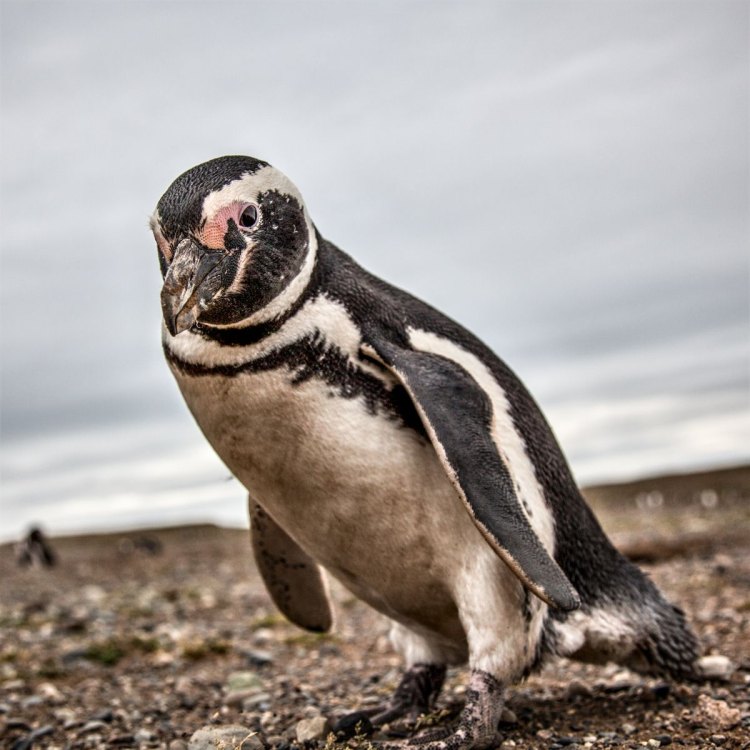
Magellanic Penguin
- Adult Size: Medium
- Average Lifespan: 25-30 years
- Reproduction: Monogamous
- Reproductive Behavior: Colonial nesting
- Sound or Call: Loud braying calls
- Migration Pattern: Seasonal migration
- Social Groups: Colonies
- Behavior: Social, gregarious
- Threats: Climate change, pollution, habitat destruction
- Conservation Status: Near Threatened
- Impact on Ecosystem: Keystone species, nutrient cycling
- Human Use: Tourism, fishing
- Distinctive Features: White chest with black band, pink feet
- Interesting Facts: Can dive up to 180 meters deep
- Predator: Sea lions, leopard seals, sharks
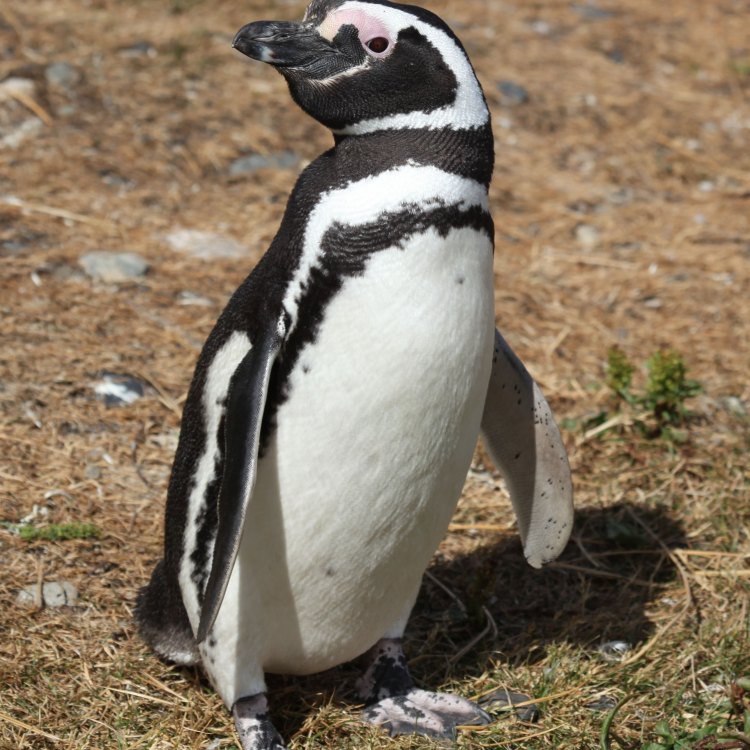
Spheniscus magellanicus
The Regal Waddlers: Exploring the Fascinating World of Magellanic Penguins
When you think of penguins, images of cute, tuxedo-clad birds waddling on the ice may come to mind. But there is much more to these flightless birds than meets the eye. In this article, we will take a closer look at one particular species - the Magellanic Penguin - and discover the unique features that make them truly one of a kind.The Magellanic Penguin (Spheniscus magellanicus) is a medium-sized penguin species that can be found living along the coasts of South America PeaceOfAnimals.Com. These penguins are named after the Portuguese explorer Ferdinand Magellan, who first spotted them during his voyage around the world in the 16th century.
Also known as the "jackass penguin" due to their braying calls, Magellanic Penguins are highly social and gregarious birds that live in colonies. They have captured the hearts of many with their adorable appearance and playful personalities, but there is so much more to these creatures that make them truly fascinating.
The Regal Adulthood: Size, Lifespan, and Reproduction
As mentioned, Magellanic Penguins are considered to be medium-sized penguins, with adults reaching an average height of 24-30 inches and weighing between 10-14 pounds. This makes them smaller than their larger relatives, such as the Emperor Penguin, but still larger than some of the smaller species like the Little Penguin.Magellanic Penguins have a relatively long lifespan for a wild bird, with an average lifespan of 25-30 years. However, some individuals have been known to live up to 40 years in captivity. This is quite impressive considering that they face many threats in the wild.
One of the most unique aspects of these penguins is their reproductive behavior Moth. Magellanic Penguins are known to be monogamous, meaning they mate with one partner for life. Each year, they return to the same nest and mate with the same partner, reinforcing their bond.
The Family that Waddles Together: Colonial Nesting and Social Behavior
Like most penguin species, Magellanic Penguins have a colonial nesting behavior, which means that they gather in large groups to build their nests and raise their young. These colonies can reach up to thousands of individuals during the breeding season, making for quite a spectacle.The nests of Magellanic Penguins are made of pebbles and can be found on sandy or rocky areas, often hidden among the vegetation. Both the male and female penguins take turns in digging the nest and incubating the eggs, which usually hatch after 40 days.
Magellanic Penguins are highly social and gregarious animals, and they spend most of their time with their colony. They have a unique way of communicating with each other through loud, braying calls, which often sound like donkeys, hence the nickname "jackass penguins." These calls serve as a way to locate their partner and chick within the crowded colony.
A Seasonal Journey: Migration Pattern and Behavior
Unlike most penguin species that remain in their colonies all year round, Magellanic Penguins are known to be migratory birds. They embark on a seasonal journey, traveling hundreds of miles to find food and breeding grounds.During the breeding season, which usually starts in September, they gather at their colony and begin their nesting rituals. Once the chicks have hatched and are old enough to survive on their own, the adults leave the colony and head out to sea, where they stay until the following breeding season.
Then, they return to the same colony year after year, despite the long journey, showing the strong bond and attachment they have with their nesting site and partner.
A Threatened Existence: The Impact of Climate Change and Human Activity
Despite their seemingly resilient behavior, Magellanic Penguins are facing numerous threats in the wild that put their survival at risk. Like many other species, they are impacted by climate change, which affects their food sources and nesting sites.In addition, pollution and habitat destruction, mainly caused by human activity, are also serious concerns for these penguins. With increased fishing activity and oil spills, their delicate marine ecosystem is constantly under threat.
Conservation Status: Near Threatened
Due to these threats, Magellanic Penguins are currently classified as Near Threatened on the International Union for Conservation of Nature (IUCN) Red List. This means that they are at risk of becoming endangered in the near future if conservation efforts are not taken seriously.
The Vital Role of Magellanic Penguins in Ecosystem Health
Apart from being adored for their cuteness and entertaining behavior, Magellanic Penguins play a vital role in maintaining the health of their marine ecosystem. As a keystone species, their presence impacts the entire ecosystem, making them an essential component for its stability.For instance, penguins feed on fish and krill, and their droppings are rich in nutrients. These droppings are then used by other species, such as fish and seabirds, as a source of food. This cycle of nutrient cycling not only supports the food web but also helps maintain healthy water quality.
A Human Connection: Tourism and Fishing
Human activities have a significant impact on Magellanic Penguins, both positive and negative. On one hand, their adorable appearance and unique behaviors have made them a popular attraction for tourists, bringing in economic benefits to the local communities.On the other hand, human activities such as fishing can also have a detrimental effect on these penguins. Commercial fishing often results in bycatch, where penguins and other non-target species get caught in the fishing gear and die as a result.
Pink Feet and Black-and-White Chest: Distinctive Features of Magellanic Penguins
One cannot talk about Magellanic Penguins without mentioning their distinctive features. These penguins have a white chest, with a black band that stretches from their beak to their eyes, making them easily recognizable. This marking is unique to each individual, much like a human fingerprint.Another distinctive feature is their pink feet, which makes them stand out from other penguin species. This unique coloration is due to the presence of carotenoids in their diet, which they acquire from feeding on krill and other marine organisms.
The Ultimate Divers: Interesting Facts About Magellanic Penguins
Apart from their iconic appearance, Magellanic Penguins are also known for their impressive diving abilities. These birds can dive up to 180 meters deep in search of food, spending up to five minutes underwater. This remarkable feat is possible due to their streamlined body and efficient flipper-like wings, which help propel them through the water.Living in a Dangerous World: Predators of Magellanic Penguins
Despite their impressive diving abilities, Magellanic Penguins still have predators to watch out for in the wild. The main threats to these penguins include sea lions, leopard seals, and sharks. These predators often attack penguins when they are swimming or out at sea, making it a battle for survival for these flightless birds.In conclusion, the world of Magellanic Penguins is one filled with wonder and amazement. These regal birds have captured our hearts with their adorable appearance and unique behaviors, but they are facing numerous threats that jeopardize their survival. It is up to us to protect these incredible creatures and ensure their survival for generations to come, and to continue admiring and learning from these fascinating creatures of the sea.
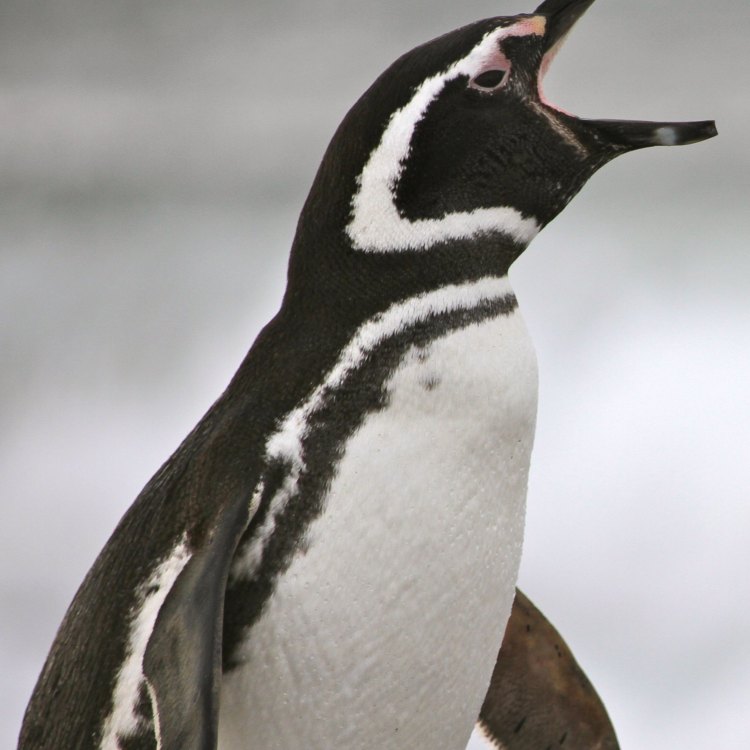
Majestic Magellanic Penguins: A Fascinating Species of the South American Coast
Disclaimer: The content provided is for informational purposes only. We cannot guarantee the accuracy of the information on this page 100%. All information provided here may change without prior notice.



